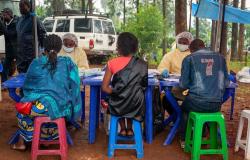The Agir pour le cœur des femmes association publishes the figures from its 2024 National Observatory of Women’s Health. The data comes from medical files resulting from screenings of the Women’s Heart Bus – a traveling medical bus that goes to meet women for cardiovascular and gynecological screening. In all, more than 8,000 women pushed the door of the Women’s Heart Bus over three years.
What are the cardiovascular risk factors in women?
According to these data, 89% of women have at least two cardiovascular risk factors. For the association, these women are “ at high cardiovascular risk ». 46% of them had two gynecological risk factors such as contraindicated contraception, no gynecological follow-up, late pregnancies, etc. In addition to a cardiovascular risk factor. Among these factors:
Age and menopause are also risk factors, while the median age of women who make up the Women’s Heart Bus cohort is 55 years (13 million women are over 55 in France). “Before menopause, female hormones, such as estrogen, protect women against cardiovascular disease. They reduce ‘bad’ cholesterol and increase ‘good’ cholesterol, thus preserving blood vessels. But this protection decreases with hormonal contraception then disappears with menopause. explains the French Federation of Cardiology.
Psychosocial risks more present in women
In addition, 67% of women have psychosocial risk factors, such as chronic stress. “Twice as many women as men suffer from a depressive episode and they are more frequently in a disadvantaged socio-economic situation. These risk factors are more linked to coronary heart disease in women than in men, making it as important a risk factor as high blood pressure and diabetes. states Acting for the Heart of Women.
Despite this cardiovascular risk, only 1 in 5 women benefit from follow-up by a specialist, 79% have none. Among postmenopausal women, a particularly high-risk period, 74% of them do not have cardiovascular monitoring. As for gynecology, only 44% of postmenopausal women benefit from appropriate follow-up.
Acting for the hearts of women denounces “the lack of consideration of female specificities by medicine”. This tends “to generate major support defects. The symptoms are less well identified, the treatments more suited to men… Added to this is the apprehension of performing cardiac massage on a woman for fear of touching her breasts…”, adds the association.
Women treated 36 minutes later than men during a cardiac accident
The French Cardiology Federation notes that women tend to minimize their symptoms and delay their treatment: “ when they consult, the mention of their symptoms is not systematically associated with a cardiovascular problem”, adds the FFC.
“In the large French registry focusing on myocardial infarctions (FAST-MI registry), we observe a median time before the first call following chest pain of 120 minutes for women and 84 minutes for men; and there, even after adjusting for age and the typicality of symptoms, the risk of taking more than an hour before calling is increased by 40% in women compared to men. » This shows a gender gap for the first chest assessment and an underestimation of the probability of a heart attack by women themselves.
And while cardiac rehabilitation is essential for recovery after a cardiac event, women are again adversely affected.
The explanation put forward by the FFC? “Women often prioritize their family and professional obligations to the detriment of their health. They want to resume their daily activities while a period of rehabilitation in a center, supervised by a multidisciplinary team, would allow them to benefit from all the practical advice to return to a life as normal as possible and with a minimized risk of relapse.
The French Cardiology Federation calls for catching up on the impact of cardiovascular diseases in women. To achieve this, she wants to inform women but also men via a video campaign broadcast until June 23 and increase awareness among health professionals about the specific care and monitoring that women need.






